Picture this: you’re out in the yard, sun shining, lawn mower humming, but instead of neatly clipped grass, you’re left with a messy, uneven trim. You face a common yet often overlooked issue – poor lawn mower suction.
In short, if you don’t learn how to improve lawn mower suction, then you may face a lot of hassles in your daily gardening routine.
Without effective suction, your mower fails to lift grass blades upright for an even cut or gather clippings efficiently, causing unsightly clumps and a less-than-perfect lawn.
The root of these problems often traces back to a lack of powerful suction.
Understanding and addressing this issue can be a game-changer for lawn maintenance, turning frustrating mowing sessions into satisfying, productive work.
This comprehensive guide will help you diagnose, troubleshoot, and, importantly, improve your lawn mower’s suction power, boosting your mower’s performance and your lawn’s appearance.

Let’s dive in to keep your green oasis at its best.
Table of Contents
What is Lawn Mower Suction?
Before we delve into the techniques to improve your lawn mower’s suction, it’s crucial to understand what it is. By grasping the concept of suction in the context of a lawn mower, you will be better equipped to identify issues and make effective improvements.
So, let’s pull back the curtain on the mechanics of lawn mower suction.
Explanation of lawn mower suction
Lawn mower suction isn’t about vacuuming your lawn. It’s a mechanical process involving airflow generated by the spinning blades of your mower, which creates a lifting force. This force, or ‘suction,’ is key to a well-groomed lawn.
When the blades of your lawn mower spin, they create a circulating air current under the mower’s deck. This airflow serves two primary functions.
First, it lifts the grass blades upright for a clean, uniform cut. Second, depending on your design, it propels the cut grass toward the mower’s bag or discharges it back onto the lawn.
The efficiency of this process determines how neatly your lawn gets mowed and how effectively the clippings are gathered or distributed.
So, when we talk about ‘improving lawn mower suction,’ we’re essentially talking about enhancing this airflow mechanism for optimal mowing performance.
Factors affecting suction power
To effectively improve your lawn mower’s suction, it’s essential to understand the various factors that impact it.
These can range from the design and condition of the mower’s blades to the deck’s design and the engine’s power. Let’s take a closer look at each of these crucial elements.
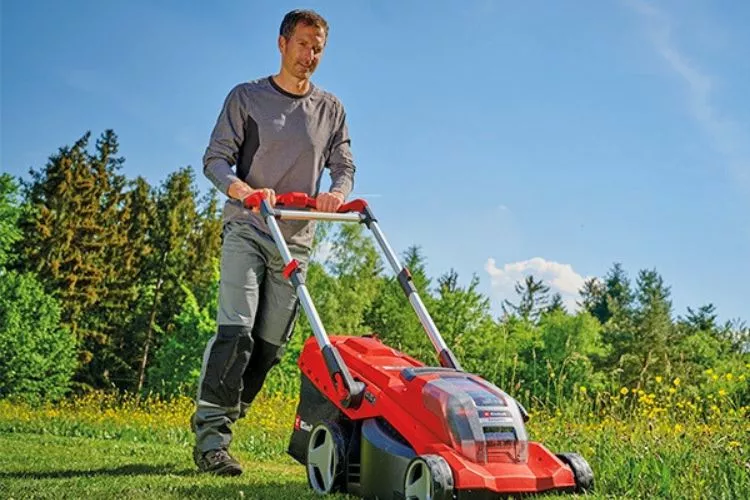
Blade design and condition
The design and condition of your mower’s blades significantly affect suction power. Different blade designs, like standard, high-lift, or mulching blades, create varied airflow patterns under the deck. High-lift blades, for example, are designed to create more lift (or suction), making them ideal for bagging clippings.
The condition of the blades also plays a role. Dull or damaged blades don’t cut grass cleanly and disrupt the airflow, thus reducing suction. Regular sharpening and timely replacement of blades can enhance the suction power.
Airflow and deck design
The deck’s design, including its shape, the position of the blades, and the discharge opening, plays a vital role in determining the airflow and, subsequently, the suction power.
A clean, smooth deck allows unobstructed airflow, creating optimal suction. In contrast, a dirty or damaged deck can hinder airflow and reduce suction.
Engine power and RPM
The engine’s power and the RPM (revolutions per minute) at which the blades spin also directly influence suction. A more powerful engine can spin the blades at higher speeds, creating stronger airflow and suction.
However, ensuring that the engine is running at the correct RPM is equally important. Too low can result in poor suction; if it’s too high, it can be dangerous and lead to premature wear and tear.
Importance of proper maintenance
Proper maintenance is pivotal for sustaining and enhancing the suction power of your lawn mower. Various components can degrade over time without routine care, leading to diminished performance and reduced suction power.
Blades can become dull and damaged, which hampers their ability to cut cleanly and generate effective airflow. A clean, well-maintained deck ensures unrestricted airflow, enhancing suction, while a dirty, clogged deck can hamper it. The engine, too, requires regular attention.
Correct oil levels, clean filters, and proper operating RPMs are all vital for maintaining engine power, which drives blade speed and suction.
In addition, keeping the discharge chute clear of clippings and debris ensures efficient grass ejection, preventing any obstruction to the airflow.
Remember, a well-maintained mower is not just about an optimally performing machine; it’s also about the result: a beautifully maintained lawn.
Troubleshooting Lawn Mower Suction Issues
Even with the best care, lawnmowers can sometimes experience reduced suction. When that happens, it’s time for a bit of detective work.
In this section, we’ll guide you through troubleshooting common lawn mower suction issues, helping you identify and rectify the culprits effectively.
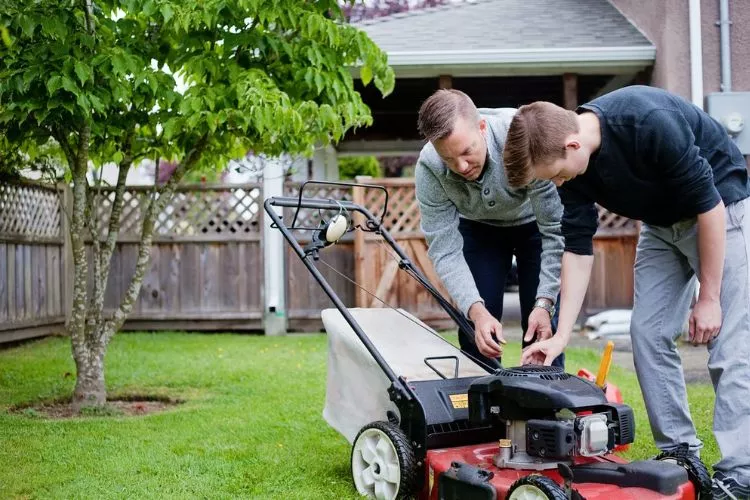
Identifying poor suction symptoms
The first step in troubleshooting is recognizing the signs of poor suction. These symptoms might seem inconsequential initially, but they can significantly impact your mower’s performance and the appearance of your lawn over time. Here are some signs to watch out for:
- Uneven Cut: One of the most noticeable symptoms is an uneven cut. If your mower isn’t lifting grass blades properly before cutting due to reduced suction, it can have a ragged or patchy appearance.
- Excessive Clippings Left Behind: If your mower isn’t collecting or mulching clippings as efficiently as it used to, it could indicate reduced suction. This often manifests as clumps of grass left on the lawn or an overly filled bag that doesn’t seem to gather more clippings.
- Increased Strain on the Mower: If the mower seems to be working harder than usual or if there’s an unexplained loss of power, it could indicate a suction issue. This is often due to clogs or blockages that the mower is trying to work through.
- Noticeable Changes in Sound: Changes in your mower’s typical operating sound can signal suction problems. This could be due to anything from clogged air filters to dull blades.
By paying close attention to these symptoms, you can start troubleshooting your mower’s suction issues, ensuring you get back to achieving that perfect cut sooner.
Common reasons for reduced suction
The reduced suction in your lawn mower can be due to various reasons. Some are simple, while others might require a bit more attention. Let’s break down some of the most common culprits.
Clogged air filters
The air filter in your lawn mower plays a critical role in maintaining effective engine operation. Over time, dust and debris can accumulate, causing the filter to become clogged. This blockage limits the amount of air reaching the engine, decreasing its efficiency and, consequently, the power of the blades, which results in reduced suction.
Dull or damaged blades
The blades are responsible for creating the airflow needed for good suction. Dull or damaged blades cannot cut grass efficiently, disrupting airflow and reducing suction. Regularly sharpening and replacing your blades when worn out or damaged can significantly improve your mower’s suction.
Debris in the discharge chute
The discharge chute can become blocked with clippings and debris, especially if you’re mowing damp grass or the bag is overfilled. This blockage disrupts the airflow and reduces the mower’s suction. Regularly cleaning out the chute can help maintain proper airflow and suction.
Worn-out deck components
The deck components, including the housing and blades, create the airflow necessary for suction. Over time, these components can wear out or become damaged, disrupting the airflow and reducing suction. Regular inspections can help you identify and replace worn-out components to maintain proper suction.
Step-by-step troubleshooting process
Knowing the common reasons for reduced suction is half the battle; the other half is taking action. This section will walk through a systematic troubleshooting process to restore your lawn mower’s suction.

Inspection and cleaning
Start with a thorough inspection of your mower. Look for any visible wear or damage, especially to the blades, air filter, and deck. Clean out any built-up grass clippings, leaves, or debris from the deck, discharge chute, and bag. Remember to disconnect the spark plug before you start for safety.
Blade sharpening or replacement
If the blades are dull or damaged, they won’t cut grass effectively or create airflow for good suction. You can sharpen the blades with a file or take them to a professional. If the blades are significantly worn or damaged, it may be best to replace them altogether.
Air filter replacement
Check the air filter. If it’s clogged with dust and debris, it can restrict airflow to the engine and reduce suction. Cleaning the air filter can sometimes improve performance, but if it’s very dirty or damaged, it’s better to replace it.
Chute and deck maintenance
Ensure the discharge chute is free from obstructions. If it’s blocked, it can disrupt airflow and reduce suction. The deck also needs attention. Check for signs of wear or damage and clean underneath it to remove any built-up grass clippings.
This systematic approach can help you identify and address any issues affecting your lawn mower’s suction. Remember, prevention is always better than cure, so make these checks regularly to keep your mower running smoothly.
How to Improve Lawn Mower Suction? (A Step-By-Step Process)
Once you’ve diagnosed and addressed any immediate issues, there are proactive steps you can take to further enhance your lawn mower’s suction. Here’s a step-by-step process to keep your lawn looking its absolute best.
Upgrading your lawn mower’s components
Improving your lawn mower’s suction isn’t just about maintaining what you’ve got; sometimes, an upgrade can make all the difference. Let’s look at some potential enhancements to your mower’s blades.
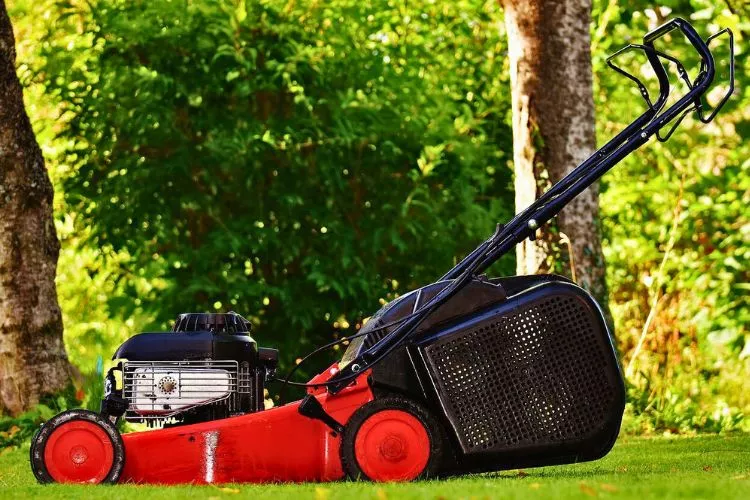
High-lift blades
As their name suggests, high-lift blades are designed to create a high-lifting action. This generates more airflow under the deck and leads to better suction. They are ideal for bagging grass clippings, especially if you have a large yard with tall or dense grass.
Mulching blades
Mulching blades can provide superior suction if you prefer to mulch your grass clippings. These blades cut the grass into smaller pieces, decomposing faster and returning nutrients to your lawn. This creates a healthier lawn and reduces the need for frequent emptying of the collection bag.
Gator blades
Gator blades, or 3-in-1 blades, combine the benefits of high-lift and mulching blades. They can bag, mulch, and discharge grass clippings with excellent efficiency.
Their unique design creates more turbulence under the deck, which results in better suction and a more evenly cut and mulched lawn.
Aftermarket attachments for improved suction
A whole world of aftermarket attachments is designed to enhance your mowing experience. Some can be particularly useful for improving your lawn mower’s suction. Let’s dive into a few notable options.
Double-bag grass collectors
These are designed to hold twice the amount of grass clippings compared to a standard bag. This means less time emptying the bag and more time mowing. Additionally, their design can help maintain a strong airflow for longer, thus improving overall suction.
Lawn sweepers
These attachments can be incredibly useful for larger lawns or when you have many leaves or other debris. They are towed behind your mower and collect the clippings or debris, allowing it to focus on cutting grass and maintaining strong suction.
Turbo kits for increased airflow
These kits are designed to enhance your mower’s airflow and, therefore, its suction. They usually include a high-performance fan blade that increases the air velocity under the mower deck.
Remember, before purchasing any aftermarket attachment, ensure it’s compatible with your lawn mower model.
Proper Lawn Mower Usage and Techniques
Even with all the right equipment and maintenance, effective mowing still requires the right techniques. This section discusses how your mowing habits can impact your lawn mower’s suction.
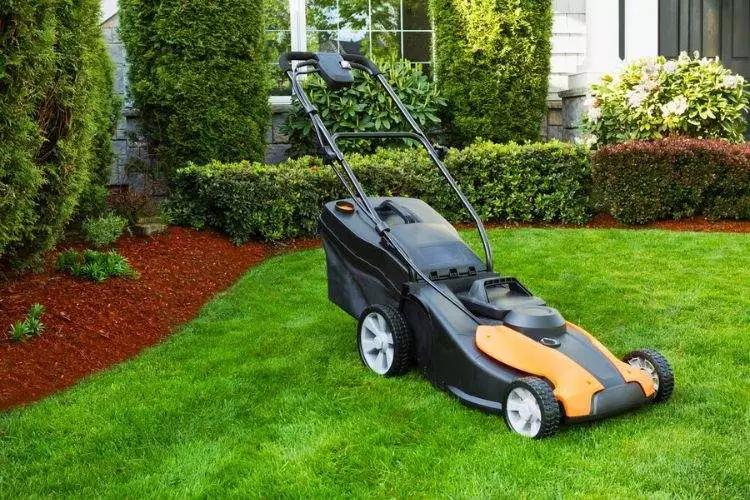
Mowing patterns for better suction
Your mowing pattern can significantly impact your lawn mower’s suction. Here are a few strategies you might find helpful:
- Avoid Mowing in the Same Direction Every Time: This helps stand the grass for a more even cut. It also reduces soil compaction, allowing better air and water penetration.
- Use a Spiral or Zigzag Pattern: These patterns can help improve the mower’s suction by making the clippings more manageable, reducing the chance of clogs.
- Overlap Your Passes Slightly: Overlapping helps maintain a consistent suction, as the mower always cuts a combination of grass already cut on the previous pass and new, uncut grass.
Adjusting mowing height correctly
Correctly adjusting the mowing height can make a big difference in your lawn mower’s suction. Here’s what you need to know:
- Match the Height to the Grass Type: Different grass types have different ideal cutting heights. For example, Bermuda grass does well, around 1.5 inches (approx. 3.8 cm), while St. Augustine grass prefers 2.5 to 3.5 inches (approx. 6.4 to 8.9 cm).
- Consider the Season: In hotter, dryer months, leaving the grass a bit taller is often better to protect the soil from the sun and retain moisture.
- Avoid the Shortest Setting: Mowing too short can stress the grass and reduce suction as the mower blades struggle to pick up the cut grass effectively.
Incorporating these techniques into your mowing routine can greatly enhance your lawn mower’s suction and overall performance.
Best practices for bagging and mulching
Whether you bag or mulch can impact your lawn mower’s suction. Here’s how:
- Bagging: Bagging is great for keeping your lawn looking tidy. To optimize suction, it’s important to empty the bag regularly. If it becomes overfilled, it can restrict airflow and reduce suction.
- Mulching: Mulching returns nutrients to the lawn but requires more suction power to chop the clippings finely. Use a mulching blade to enhance suction, and avoid mulching if the grass is too long or wet, as it can clump and clog the mower.
Overlapping mowing passes
Overlap your mowing passes slightly to maintain consistent suction. By overlapping about a third of a mower deck’s width, you ensure that your mower always cuts a mixture of grass cut on the previous pass and new, uncut grass.
This technique keeps the volume of clippings manageable, maintaining strong suction and preventing the potential for clogging.
In conclusion, understanding and applying these techniques can boost your mower’s suction power and contribute to a healthier and more attractive lawn.
Regular Maintenance and Cleaning
Like any other machine, your lawn mower performs best when kept in top shape. Regular maintenance and cleaning are crucial in enhancing your mower’s suction and overall operation.
The following sections discuss how proper upkeep can extend your mower’s life, optimize performance, and prevent avoidable mechanical issues. Let’s get your lawn mower humming like a well-oiled machine. Stay tuned!
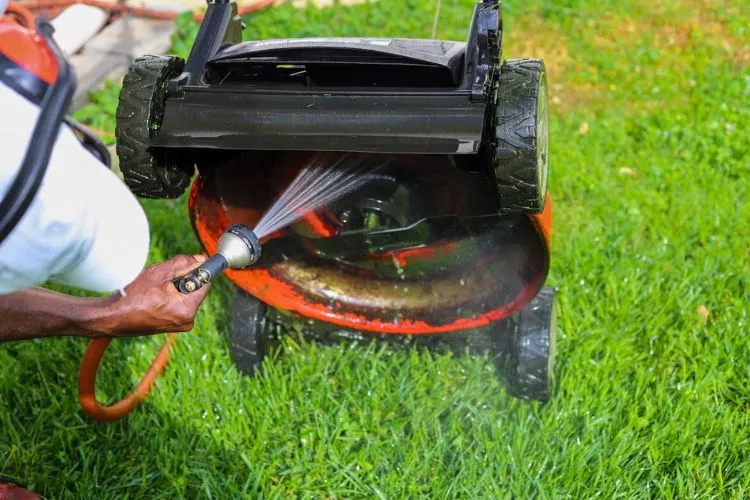
The importance of routine maintenance
Neglecting your lawn mower’s maintenance can lead to a decline in its performance over time, including a significant reduction in suction.
This can cause uneven cuts and leave your lawn looking unkempt. More than that, it can lead to serious mechanical problems that can be costly to repair.
Routine maintenance is the cornerstone of a smoothly operating lawn mower. It ensures that all components function optimally and can often identify potential issues before they become problematic.
This includes checking for wear and tear, cleaning or replacing filters, sharpening blades, and ensuring the mower deck is free from accumulated grass clippings.
Like you regularly service your car for the best performance, your lawn mower deserves the same attention.
It’s a small investment of time that pays off by keeping your mower running effectively for many years, maintaining that strong suction power we’re all after.
Scheduled inspection checklist
A scheduled inspection of your lawn mower should be a part of your routine. This systematic check can help you identify potential issues affecting the machine’s suction power and overall performance.
Let’s explore the key areas you should focus on during your mower’s scheduled inspection.
Cleaning the air filter
The air filter is vital for maintaining the lawn mower’s engine health, directly impacting suction. A clean air filter ensures the engine gets a steady supply of fresh air needed for optimal performance.
If the filter is clogged, the engine can become starved of air, reducing suction and potentially causing other engine problems. Clean your air filter regularly, and consider replacing it every season or more often if your mower sees heavy use.
Checking and tightening belts
Belts are integral to a mower’s operation, connecting the engine to the blades. A loose or worn-out belt can slow the blade’s rotation speed, reducing the mower’s suction. Regularly inspect the belts for wear, tears, or looseness, and replace them as needed.
Lubricating moving parts
Lubrication reduces friction among moving parts, ensuring smooth operation and preventing premature wear. Regularly lubricate parts like the wheels, axles, and pivot points on the mower deck.
Make sure to use a lubricant recommended by your lawn mower manufacturer.
Cleaning under the deck
Grass clippings and debris can accumulate under the deck, inhibiting airflow and reducing suction. After each use, clean under the deck to keep the airflow unimpeded and maintain your mower’s suction at peak levels. Always remember to disconnect the spark plug before cleaning for safety reasons.
Seasonal tune-ups and professional servicing
Aside from the routine maintenance and cleaning you can do yourself, your lawn mower can benefit greatly from professional servicing, especially in changing seasons.
A professional tune-up typically includes a thorough inspection, necessary repairs, and adjustments to ensure optimal performance for the coming season.
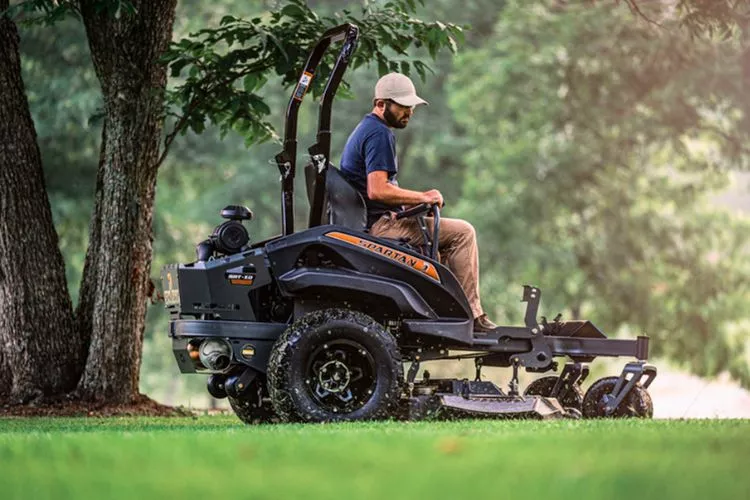
Professionals have the expertise to spot and address issues you might overlook. They can also perform tasks that require special tools or knowledge, such as adjusting the carburetor, checking the ignition system, or thoroughly inspecting the mower deck.
These seasonal tune-ups, ideally before the mowing season, can significantly improve your lawn mower’s suction power, longevity, and overall performance. It’s a worthwhile investment to keep your machine running at its best and your lawn looking its best.
Pro Tips for Optimal Suction
To keep your lawn mower working at its peak efficiency and maintaining optimal suction, there are a few professional tips you might find handy.
- Keep your blades sharp and balanced: Dull blades tear the grass instead of cutting it cleanly, reducing suction and the overall quality of the cut. Regularly sharpening and balancing your blades is essential for maintaining strong suction and getting a clean, even cut every time.
- Regularly inspect and clean the deck and chute: Debris in the deck and chute can significantly impede your mower’s suction. It’s crucial to routinely inspect these areas and clear any grass clippings or other debris to ensure optimal airflow and suction.
- Choose the right mowing pattern for your lawn size: Different mowing patterns can affect your lawn mower’s suction. A simple back-and-forth pattern can be effective for smaller lawns, while larger lawns may benefit from more complex patterns like spiral or zigzag.
- Avoid mowing wet grass to prevent clogging: Wet grass tends to clump together and can quickly clog your mower’s deck, dramatically reducing its suction power. Always try to mow when the grass is dry for the best results.
- Invest in quality aftermarket attachments if needed: High-lift blades, double-bag grass collectors, and other aftermarket attachments can significantly improve your mower’s suction. Ensure any accessories you purchase are compatible with your specific mower model.
These professional tips, if adhered to, can significantly enhance the suction power of your lawn mower, ensuring you always get the clean, even cut you desire.
Frequently Asked Questions (fAQs)
How often should I clean my lawn mower’s air filter?
Clean your lawn mower’s air filter after every 25 hours of use or at least once per mowing season, whichever comes first.
Can I use a high-lift blade on my mower even if it didn’t come with one?
Yes, you can use a high-lift blade on your mower, but ensure it’s compatible with your specific model for optimal performance.
Why does my lawn mower lose suction when the grass is wet?
Wet grass clumps and blocks the mower’s deck, leading to decreased suction power. It’s best to mow when the grass is dry.
Should I bag or mulch my grass clippings for better suction?
Both bagging and mulching can support suction; choose based on your lawn’s needs. Bagging offers cleaner cuts, and mulching provides natural lawn fertilization.
How often should I clean the mower deck?
After each use, the mower deck should be cleaned to remove grass clippings and debris, preventing clogs and maintaining optimal suction.
How do I know if my mower’s deck components need replacement?
Visible cracks, excessive vibration, or diminished cutting performance indicate your mower’s deck components may need replacement.
Conclusion:
In summary, maintaining strong lawn mower suction is pivotal to effective mowing, delivering neat, healthy lawns every time.
We’ve covered many techniques and insights to help you tackle this challenge. By implementing these, you optimize your mower’s performance and contribute to your lawn’s well-being.
Remember, a well-maintained mower equates to a well-maintained lawn. With these tips in your arsenal, we’re confident you can make the most of your mowing routine.
Here’s to happier mowing and healthier lawns! We hope that this guide has been helpful. You can read about similar topics here on our website. Check back again soon for more.

